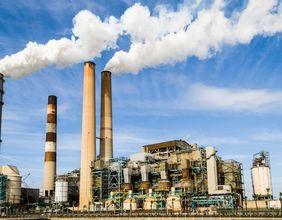Highlights
- Prolonged period of below-trend real GDP growth.
- Growth ranges between 0-2% without necessarily turning negative.
- Differs from an official recession with no need for consecutive negative quarters.
A growth recession is an economic condition where the economy experiences a sustained period of real GDP growth that is significantly below its long-term trend. Unlike an official recession, which typically requires two consecutive quarters of negative GDP growth, a growth recession can occur even when the economy is still growing, albeit at a very sluggish pace. For the U.S. economy, this would typically mean growth in the range of 0-2 percent.
In a growth recession, the economy expands but at a rate insufficient to create enough jobs or improve living standards noticeably. This condition can lead to a stagnant job market, muted wage growth, and reduced business investment. The key aspect of a growth recession is that while economic output is increasing, the pace is too slow to prevent rising unemployment or declining consumer confidence.
One of the distinguishing features of a growth recession is that it does not require two consecutive quarters of negative GDP growth, which is a common benchmark for defining a recession. Instead, the economy grows at a pace that is below its potential, causing a gap between actual output and what could be achieved with full utilization of resources. This period of subpar growth can extend beyond a single quarter, making it a prolonged slowdown rather than an acute contraction.
A growth recession can be triggered by several factors, including high inflation, tight monetary policies, declining consumer demand, or global economic uncertainties. For instance, central banks might raise interest rates to combat inflation, leading to reduced consumer spending and business investment. Similarly, external shocks, such as geopolitical tensions or supply chain disruptions, can dampen economic activity without necessarily leading to a full-blown recession.
Despite positive GDP figures, a growth recession can have adverse socio-economic consequences. Unemployment rates may rise or remain elevated, as businesses hesitate to expand amid sluggish demand. Wage growth may stagnate, reducing purchasing power and affecting consumer confidence. Furthermore, reduced business investment can slow down productivity gains, impacting long-term economic growth.
Policymakers often face challenges in addressing growth recessions. Unlike in official recessions, where aggressive fiscal stimulus or monetary easing is typically deployed, the response to a growth recession requires a more nuanced approach. Stimulating growth without triggering inflation or financial imbalances is a delicate balancing act.
Conclusion
A growth recession represents a unique economic challenge where growth persists but remains disappointingly low. It underscores the importance of understanding economic health beyond traditional recession indicators. By recognizing and addressing the underlying factors contributing to sluggish growth, policymakers can better navigate periods of economic stagnation and foster more robust and sustainable growth trajectories.





